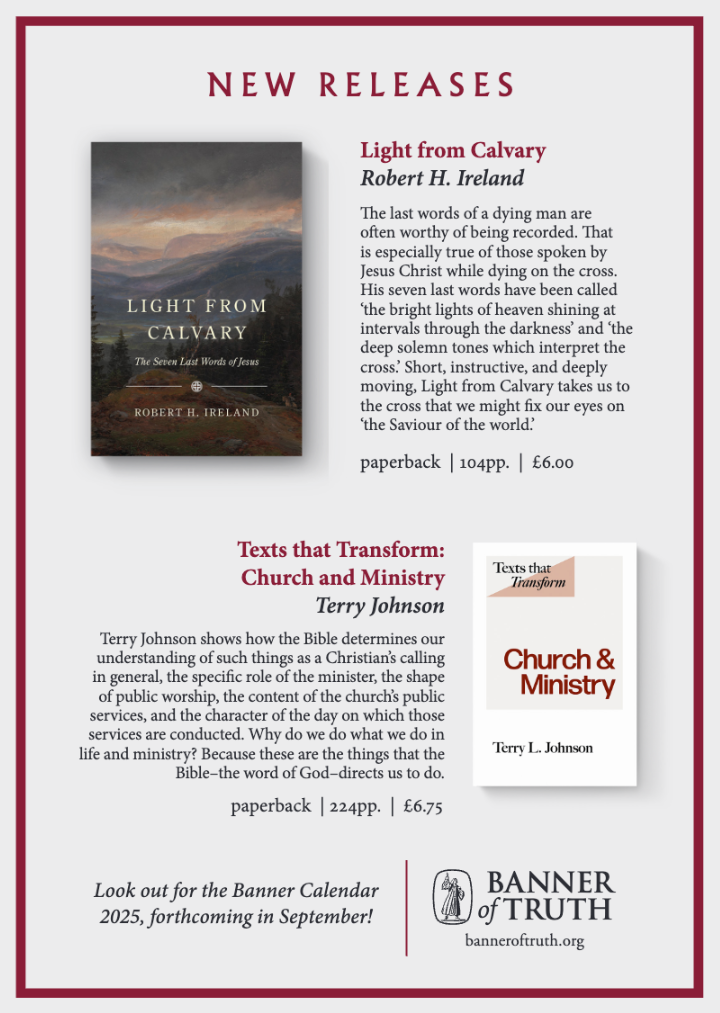The Clapham Sect and the abolition of the slave trade (3)
The early English abolitionists faced fierce opposition from church and state. But they had set their course and, on 17 June 1783, the London Yearly Meeting of Quakers presented to Parliament the first ever petition against the slave trade.
Following that, in 1787, a twelve-member Committee for the Abolition of the Slave Trade was established in London. Nine of its members were Quakers; the other three, including Granville Sharp and Thomas Clarkson, were Anglicans. Later, this committee sent every MP a copy of John Newton’s Thoughts upon the African slave trade.
Enquiry
In 1788, as a result of abolitionist pressure, the Privy Council instructed its Committee on Trade and Plantations to begin an enquiry into the slave trade. Among the pro-slavers testifying was Admiral Lord Rodney, who declared he had never seen a Negro flogged half as severely as an English schoolboy!
Among the anti-slavers were Rev. James Ramsay, formerly Rector of St Kitts and then Vicar of Teston in Kent; Rev. John Newton, former slave trader and Rector of St Mary Woolnoth in London; and Thomas Clarkson.
James Ramsay was in ‘the Teston circle’ that included the evangelical Comptroller of the navy Sir Charles Middleton, his wife Lady Margaret and Elizabeth Bouverie.
Thomas Clarkson was tireless in gathering evidence against the trade. He had ridden 1600 miles in two months persuading witnesses to testify. Once, tracking a potential witness, he found him on the 317th ship he visited!
On one occasion Clarkson barely escaped with his life, when a gang tried to hustle him over Liverpool’s pier-head. But he was able to show the Committee all the paraphernalia of slavery — the thumbscrew, punishment collar, chains, shackles, knotted rope’s end for beating and instrument for force feeding.
William Wilberforce led the campaign in the Commons. His first speech on the subject was on 12 May 1789. He drew on the testimonies given to the Privy Council and in an eloquent speech lasting three and a half hours took issue with the ludicrous claims of one Mr Norris of Liverpool:
‘“Their apartments,” says Mr Norris, “are fitted up as much for their advantage as circumstances will admit … They have several meals a day — some of their own country provisions, with the best sauces of African cookery…
‘“After breakfast they have water to wash themselves, while their apartments are perfumed with frankincense and lime juice. Before dinner they are amused after the manner of their country. The song and the dance are promoted”…’
Procrastination
Wilberforce continued: ‘The song and the dance are promoted, says Mr Norris. It had been more fair, perhaps, if he had explained that word “promoted”.
‘The truth is, that for the sake of exercise, these miserable wretches, loaded with chains, oppressed with disease and wretchedness, are forced to dance by the terror of the lash, and sometimes by the actual use of it … As to their singing, what shall we say when we are told that their songs are songs of lamentation upon their departure…’
‘Total abolition is the only possible cure for [this enormous evil] … Sir, the nature and all the circumstances of this trade are now laid open to us; we can no longer plead ignorance’.
But, playing for time, the House of Commons did plead ignorance. It adjourned to gather its own evidence in spite of all the Privy Council’s work on the subject. And the next full Commons debate on the issue would not be for two years — in April 1791.
But things went no better in 1791. The Attorney General for the Leeward Islands affirmed that providence always intended one set of men to be the slaves of another; and Lieutenant Colonel Banastre Tarleton, MP for Liverpool, pilloried his opponents as religious fanatics. The abolition motion was again defeated, by 163 votes to 88.
However, something unstoppable had been put in motion. The parliamentary setbacks only served to stimulate further widespread popular agitation throughout the country for abolition.
There was a massive publicity campaign, unique by eighteenth-century standards, with petitions to Parliament, sermons, pamphlets, treatises, newspaper articles and poems including William Cowper’s The Negroes complaint.
Clapham
The defeat also impressed on Wilberforce and his colleagues that moral arguments alone were not enough. Their best hope of persuading the Commons to back down was to convince it of the slave trade’s inexpediency.
To do this, they needed to prove the high mortality faced by sailors manning slave ships, the economic inefficiencies of the middle passage and the dangerous, long-term implications of enslaving Africans.
It was partly this urgent need for data that galvanised the gathering of the ‘Clapham Sect’. Several who would soon comprise that group were already involved as individuals in the campaign. Thomas Clarkson, while his health held out, remained an important interface between the Sect and other abolitionists.
Indeed, from 1792, abolition became Clapham’s defining work. It demonstrated the Sect’s deep commitment to practical Christianity — that is, to good works springing from vital, evangelical religion. This commitment was behind the Claphamites’ promotion of many benevolent and Christian causes, especially abolition and the opening of British India to Christian mission.
The Sect’s precursors were Rev. Henry Venn, from 1754-1759 evangelical curate of Clapham Parish Church; and John Thornton, a wealthy evangelical living at Clapham.
During the late 1780s Wilberforce regularly stayed with John Thornton and became friendly with his youngest son, Henry. John Thornton was half-brother to William Wilberforce’s Aunt Hannah.
Hannah and her husband had brought vital Methodist influences to bear on Wilberforce as a nine-year-old boy. And Wilberforce’s friendship with Henry Thornton was to be a key relationship. Henry would become a central motivating figure to the Sect.
In 1792 Henry purchased a house called Battersea Rise on the west side of Clapham Common. In the same year he invited Wilberforce to share Battersea Rise with him and made it possible for Rev. John Venn to succeed his father at Clapham Parish Church.
Precedent
Henry built two more houses in the grounds of Battersea Rise, which he let to Anglican evangelicals Charles Grant and Edward Eliot. Grant was a director of the East India Company and Eliot was brother-in-law to William Pitt.
In 1797 Wilberforce married Barbara Spooner. The Wilberforces moved into Edward Eliot’s house, Broomfield (Eliot had become seriously ill and died that year).
So the inner circle of the Clapham Sect consisted of the Grants (until they moved to London in 1802), Thorntons and Wilberforces, with the Venns at the rectory — all living in close friendship and worshipping together in nearby Clapham Church.
This circle was extended by other arrivals to houses around Clapham Common — James Stephen and, in 1802, Zachary Macaulay and John Shore (Lord Teignmouth). Shore had been Governor General of India from 1793-1798.
Granville Sharp visited from nearby Fulham, and there was input from Charles Simeon and Isaac Milner from Cambridge.
Another regular visitor was Hannah More. She was a member of the ‘bluestocking circle’ and a well-known literary figure and playwright. During the 1780s she had become an evangelical Christian, mainly through reading John Newton’s Cardiphonia. She resided in the Mendips with her four sisters. The sarcastic William Cobbett called her ‘the old bishop in petticoats’!
There were other places to meet at as well as Clapham. There was the home of the Misses More; Bath, when Wilberforce was ill; Thomas Babington’s Rothley Temple, in Leicestershire; and Rev. Thomas Gisborne’s Yoxall Lodge, in Staffordshire.
Babington, Gisborne and Wilberforce had been close student friends at Cambridge. In October 1790 these three had worked together non-stop at Yoxall Lodge, trawling through 1400 folio pages of Privy Council evidence to furnish Wilberforce with the detailed arguments needed for the 1791 parliamentary debate.
Connections
Apart from Lord Teignmouth, no member of the Clapham Sect held high office, although Babington, Grant, Stephen, Thornton, and Wilberforce were MPs and Charles Grant would become chairman of the East India Company. The Sect’s effectiveness, humanly speaking, was in its natural abilities and extensive connections.
In Parliament, the Claphamites spearheaded a larger group of concerned MPs including Henry Bankes and Sir Charles Middleton. They worked with important parliamentary figures like Jeremy Bentham, Henry Brougham, Lord Castlereagh, Lord Henry Dundas, William Pitt and the Duke of Wellington. Today it’s called ‘networking’!
These connections were also important after 1807, when, urged on by Claphamites, the British government enforced the abolition of the trade within its own jurisdiction and sought to extend abolition to the other European powers.
Today we should pray that the Lord would again raise up a group of godly and influential Christian MPs. We should pray for the repeal of unchristian and anti-Christian legislation and elimination of many resultant social evils.
If there is one thing that Clapham’s successful encounter with the slave trade tells us, it is that ‘with God all things are possible’ (Matthew 19:26).
To be continued
Roger Fay







